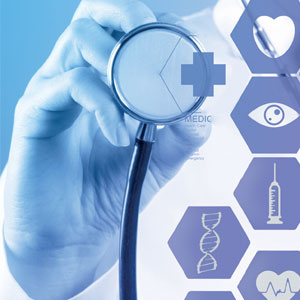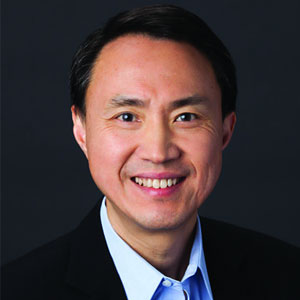THANK YOU FOR SUBSCRIBING

Machine Learning and AI: Innovation, Disruptions and Opportunities for the Healthcare Industry
David McKeering, Healthcare Leader, PwC South East Asian Consulting


David McKeering, Healthcare Leader, PwC South East Asian Consulting
The healthcare industry is undergoing an epidemiological transformation and healthcare-related developments in artificial intelligence and machine learning will play an important role in successfully navigating this transformation. The epidemiological shift can be understood by analyzing the changes in global life expectancy and disease burden over the past few decades. The global average life expectancy at birth has increased consistently across the world, with Japan and Hong Kong currently topping the list at 84. This has resulted in an increasingly aging population which requires increased medical attention.
Additionally, there has been a shift in the global disease burden from communicable diseases to non-communicable diseases, which indicates that individuals have been leading progressively unhealthy lifestyles. The epidemiological shift has brought about an increased demand and cost burden of healthcare and urgently requires healthcare delivery models to be re-assessed through innovative and disruptive means to make healthcare delivery more sustainable and cost-effective; all while improving clinical outcomes.
According to a study conducted by a medical devices manufacturer, nearly 70 per cent of medical data remains largely unsifted. The data has traditionally remained unavailable because it was either not digitised or not aggregated. Through technological developments however, such as increased adoption of centralized Electronic Health Record (EHR) systems, this data is now becoming available to both researchers and clinicians. The use of this data and developments in computer science, such as artificial intelligence and machine learning, provide great potential to reduce cost of healthcare delivery, improve clinical disease management, and enhance prevention of lifestyle based non-communicable diseases.
The reduction in cost of healthcare delivery will be achieved by leveraging the workforce at different stages of care and by introducing decision support systems.
The Reduction In Cost Of Healthcare Delivery Will Be Achieved By Leveraging The Workforce At Different Stages Of Care And By Introducing Decision Support Systems
Assuming machine learning systems can be trained to identify and screen for different diseases, these systems can complement the current specialist workforce and improve the overall productivity of the workforce.
These systems should not just be available to specialist doctors, but also general physicians so that they can be deployed at primary facilities, thereby reducing the cost burden to tertiary care facilities. To enable this outcome, public health systems with large aggregations of patient records have started collaborating with artificial intelligence companies to search for early signs of disease. Some predictive analytics tools, with clinical evidence, are already available in the market to help primary care physicians identify and screen patients with possible mental health conditions.
Improvement in clinical disease management involves developing a comprehensive approach for it. This is important because hospital-centric systems were originally designed to provide acute care for very ill people over a period of a few days or weeks. However, with the increase in people whose conditions are chronic, complex, and require longer term treatment, health systems are burdened by unforeseen levels of demand.
It is now possible for artificial intelligence to coordinate care plans and monitor patient compliance against long term treatment programs, which will help reduce patient load. One company has developed an application that helps monitor patients with long term conditions and helps them adhere to medication intake by using visual recognition to confirm ingestion of medication.
Common lifestyle based non-communicable diseases include diabetes, heart disease, and stroke. According to the WHO, over 80 per cent of these diseases can be prevented by eliminating major risk factors. In recent times, there has been an increased willingness by the public to be more active participants in their health. This has been accelerated with democratisation of access of healthcare, with powerful tools that incorporate artificial intelligence and machine learning being made available on mobile platforms. The combination of platforms with Internet of Medical Things in consumer applications can help people manage their own healthcare and keep themselves well through healthier living. These health management solutions have varying degrees of complexity. They can be simple wearables which monitor multiple health-related indicators and provide feedback on a continuous basis or entire ecosystems which provide integrated solutions for sleep, fitness, activity, and nutrition.
Artificial intelligence and machine learning are very promising areas for healthcare. They provide sustainable methods to overcome challenges brought forth by the epidemiological transformation which underpins the system. The large number of successful proof of concepts and commercialised solutions demonstrate the technology’s ability to help make healthcare more affordable, accessible, and trustworthy. These solutions have originated from a combination of large companies and smaller startups which are looking for an opportunity to disrupt the healthcare market. While there is considerable time before we are able to develop a care robot, these developments in technology do bring us closer to realising medical utopia.
Weekly Brief
I agree We use cookies on this website to enhance your user experience. By clicking any link on this page you are giving your consent for us to set cookies. More info
Read Also













